ShadowOperator.ShadowLengthMax Property
Gets or sets the maximum length of the shadows that are generated by the ShadowOperator.
Syntax
public System.Double ShadowLengthMax { get; set; }Property Value
Default: 5000
The maximum length of the shadows that are generated.
Remarks
Mountains outside the view may cast visible shadows, so we need to know how far to extend our search for mountains. This is given by ShadowLengthMax. A safe value on Earth should be about 400 000 meters. A smaller value will be quicker but may miss some shadows.
Examples
In Alaska, it is possible to see the peak of Denali (6190 m above sea level) from Mount Sanford (4949 m above sea level), at a distance of 365 km. So Mount Sanford can cast a shadow on Denali if the sun is in the right position. This happens for example at sunrise on 14 October 2016, about 16:36 UTC. In the screenshot below, the white spots in the Denali circle show that the peak is already sunlit. More of Denali would have been sunlit if it had not been for the shadows from Mount Sanford, although the screenshot does not give conclusive evidence.
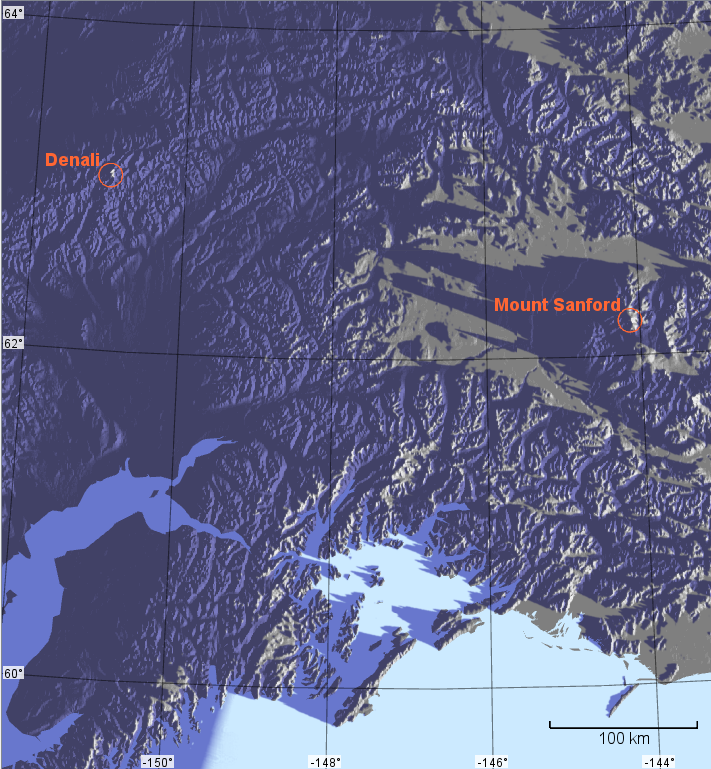 |
It is easier to see where the shadows originate if they occur at sea. The island of Mallorca has a highest elevation of 1445 m and can cast a 120 km long shadow, but only briefly. During the sunrise on 21 December 2016, the Mallorca shadow is longest at 07:13:20 UTC, as we can see in some snapshots with 1 minute intervals:
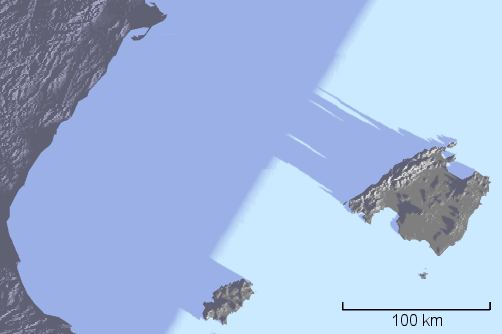 |
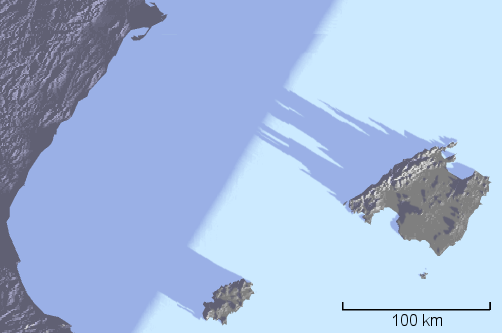 |
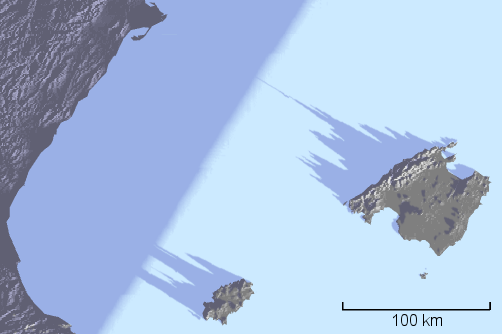 |
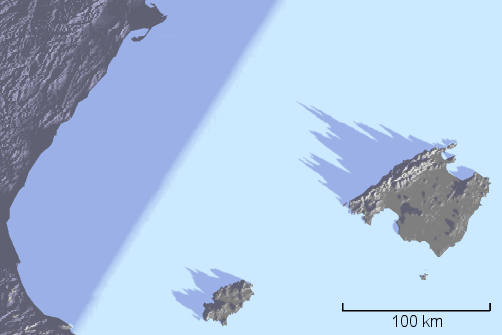 |
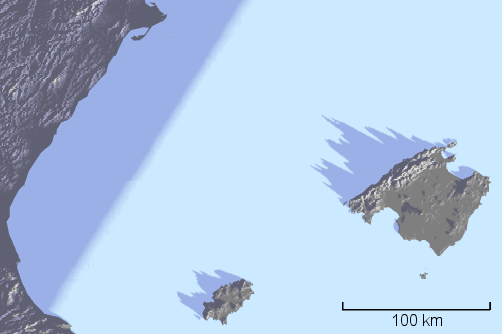 |
Platforms
Windows, Linux, Android